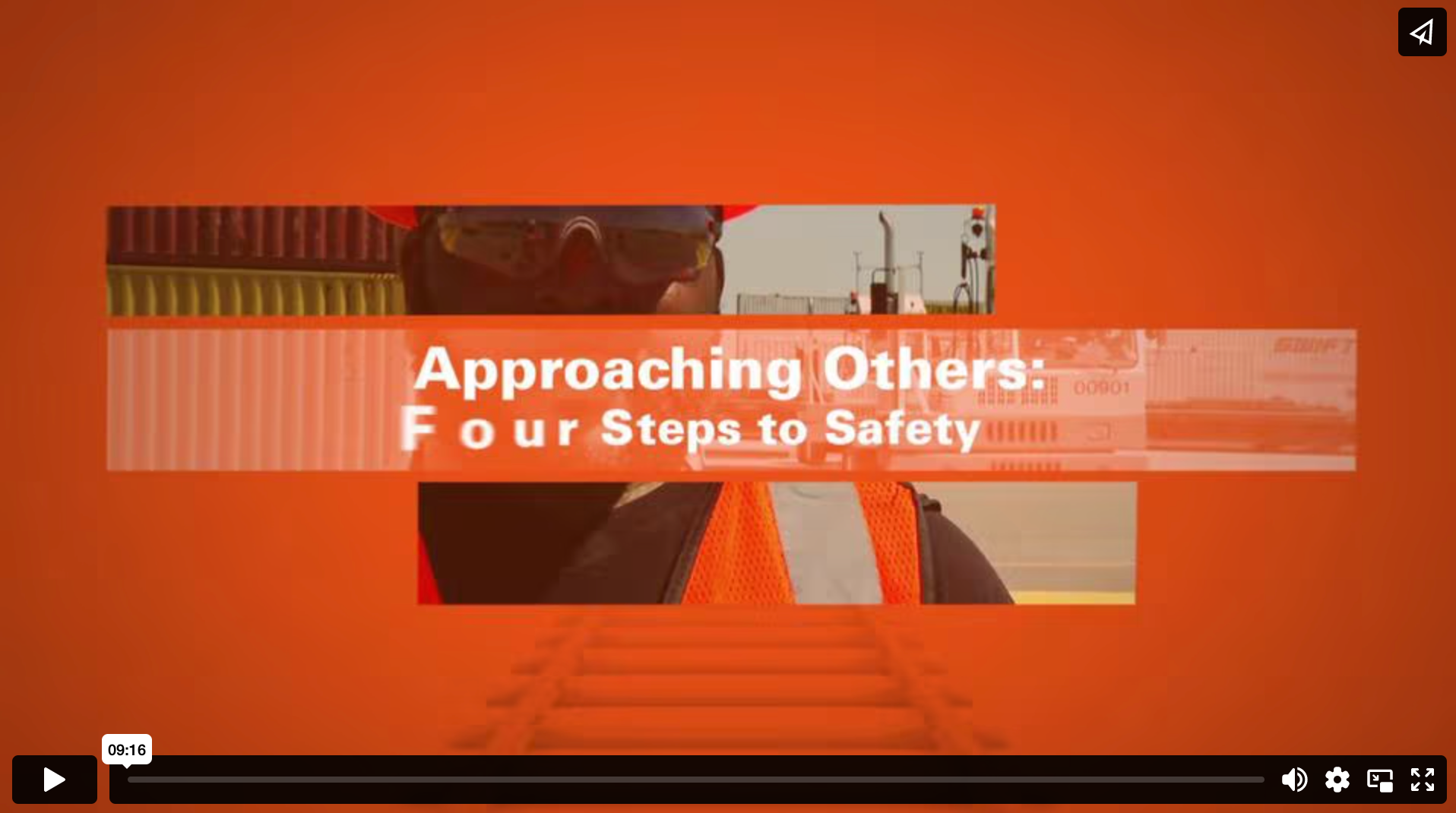10 top corporate training videos to inspire L&D teams

Corporate training videos are a powerful tool for the sheer fact that a vast majority of people prefer to consume instructional content in a video format, versus text or audio. But videos are also easy to deliver to large audiences – even easier with an LMS that allows organizations to provide access to learners anytime, anywhere.
Not only are corporate training videos easy to deploy, they’re also highly effective. Studies have shown that they help learners gain and retain knowledge better than other methods of instruction. In this article, we’ll share 10 impressive examples of employee training videos and why they’re effective.
10 inspiring corporate training videos
L&D teams have a unique opportunity to exercise their creative muscle when it comes to developing training videos for employees. Video content can take on several different forms, including:
- Animated videos, best for presenting difficult content in a way that’s easy to digest
- Simulation videos in which actors recreate realistic scenarios
- Talking head videos, an excellent choice for sharing expert knowledge
- Screencast videos in which an instructor demonstrates a process while their screen is captured
Below, we’ll see how popular fast-food chains, global financial heavyweights, and more leverage corporate training videos – often mixing the formats above to deliver engaging content.
Blind Spots: Challenge Assumptions
This video from PwC is designed to make viewers aware of “blind spots” and highlight both the consequences of ignoring them as well as the possibility of overcoming them. It’s effective because it evokes emotion – placing the viewer in the shoes of those who are overlooked and stereotyped based on gender, appearance, and more. Voice-over and actors are thoughtfully paired to connect stereotypical statements with real people.
The video then transitions to a narrator who provides the scientific reasoning behind why people make assumptions and helps the viewer understand what they might have to do to overcome their own blind spots. Since the production is short (just over two minutes) and ends on a note of inspiration, it holds the viewers’ attention and leaves them feeling hopeful that it’s possible to make a change for the better.
Resilient to Risk
An experienced instructor, a strong storyline, and supplemental animations make this Big Think+ video unique. It starts off with an interesting hook, pairing descriptions of real-world events like 9/11 and the COVID-19 pandemic with attention-grabbing visuals. Then, it establishes the instructor – retired general Stanley McChrystal – as a credible speaker on the subject, and guides learners through his solutions for responding to risk.
Even though the video is on the longer side (just over six minutes) it keeps viewers engaged, and with a synopsis at the end, learners are sure to walk away with clear action items. While not all the corporate training videos on this list have this level of production quality, Big Think+ uses it to its advantage to deliver memorable content.

Mnemonic Nmagic
At only two minutes in length, The Office-esque “Mnemonic Nmagic” showcases the power of parody. Produced by VitalSmarts, this short and sweet video immediately captures viewers’ attention by flipping a routine boardroom setting on its head with an eccentric, hilarious character named Savannah.
While the production is relatively simple – a standard meeting room, office supplies, etc. – the creative camera work and strong lead actress sell the story. The video teaches “a counterintuitive lesson about our minds and memories: they’re meant for having ideas, not holding them.”
Why Salespeople Just Can’t Shut Up
This video from training provider Rapid Learning grabs the viewer’s attention right off the bat with a catchy title. It’s designed to highlight why salespeople love to talk about themselves, and casually break some misconceptions about what customers want. Colorful graphics in quick succession paired with compelling studies from Harvard give it some real weight.
The rapid-fire experience and concise narration are key to keeping viewers engaged throughout the video. Also worth highlighting is the use of creative visuals to break down dense topics, such as dominoes falling to depict the concept of being “self-perpetuating.” Corporate training videos like this one are very cost-effective, requiring less preparation than a live shoot with actors and sets.
#chuckleheads
With a talented live-action cast, this short video cautions viewers by depicting what would happen if a common corporate faux pas became headline news. “#chuckleheads” uses comedy stealthily to illustrate how office gossip can spread like wildfire and have disastrous outcomes.
Comedy can be an excellent device for breaking down resistance to new ideas. Learning designers who want to develop comical corporate training videos should be keenly aware of their audience, though. Humor is effective when used appropriately – if the jokes don’t land, the learning likely won’t either. Consider pairing a video like this one alongside other materials that allow for further reflection and discussion to reach the intended learning outcomes.
Service and Hospitality at Chick-fil-A
This live-action video covers multiple components of customer service at Chick-fil-A. One of the longest corporate training videos on this list, it remains engaging with purposeful and personal stories from the Chick-fil-A founder, as well as visual demonstrations of the recommended behaviors in action.
It’s also effective because the instructor’s credentials are established early on. A video like this one could be paired with role playing in practice sessions so learners can start developing the customer service skills they’ve watched on-screen.
What Clients Hear
This PwC video highlights the differences in what employees say and what potential clients hear. The live-action video is quirky and humorous – with a clever script, lighthearted background music, and good acting. But what makes it most effective is how relatable it is, which is amplified by the use of several diverse scenarios.
Videos like this one have allowed PwC to cut training time down considerably. In particular, this content was previously taught in a four-hour, instructor-led course. The video is now part of a simplified, one-hour long online experience. Replacing in-person sessions with case study videos like this one might be costly up front, but has the potential to pay off in the long run.
Hand Hygiene
Norton Healthcare identified a common problem – the lack of proper hand washing in hospitals – and used a dramatic analogy – airplanes falling out of the sky – to quickly communicate the significance of this video’s topic. The animation then bounces between interesting data and procedural knowledge, with a friendly narration and soft background music to match.
With more easily accessible online tools than ever before, videos like this one no longer require expensive animators or months of development. Instructional designers with the right training and resources can create similar videos for a fraction of the cost.
Approaching Others: Four Steps to Safety

A dramatic hook and dynamic graphics work together to make this video powerful and effective. The video discusses a new initiative by BNSF Railway encouraging personal responsibility and accountability for safe workplace practices.
BNSF worked with an external production company to gather interviews with crew members in Nebraska, Tennessee, and California that tell real world stories of railroad safety. This makes the video feel credible and compelling to viewers. And to keep things interesting, dramatic, Hollywood-style music conveys the intensity behind the message.
Etiquette for Conference Calls
Animation creation platform Vyond showcased what’s possible with their product by putting together this short, informative video. The narrator-led “Etiquette for Conference Calls” explains several best practices for problem-free video meetings. The video is effective because it’s fast-paced and visually stimulating.
VYOND offers customizable templates that any organization can make their own. While animations aren’t appropriate for all corporate training videos, they’re very effective for quick reminders that don’t necessarily require the viewer to make an emotional connection with the content.
Final thoughts
If the cost of partnering with a video production company is out of budget, the easiest way to get started is to take advantage of in-house tools and subject matter experts. When developing your own corporate training videos, there are some important best practices to keep in mind. These include:
- Keep videos brief – around five minutes long – and tightly focused on a single topic
- Pay attention to audio quality and lighting to minimize the potential for any distractions
- Invest in a quality editing software like Adobe Premiere that has a wide range of features
- Include elements such as text overlays to focus viewers’ attention on what is important
- Make videos easily accessible, including the use of closed captions
With the right strategy, equipping a team member with a camera and tripod can deliver great results for a fraction of the cost. For content that requires bringing in a subject matter expert, consider partnering with a content provider like Big Think+.
And remember, after video learning has been launched, the work doesn’t stop there. Evaluate data like watch time and view count to determine the return on investment and identify opportunities for future improvement.





